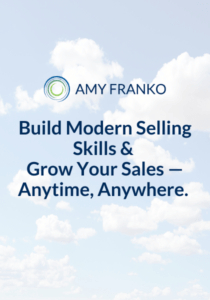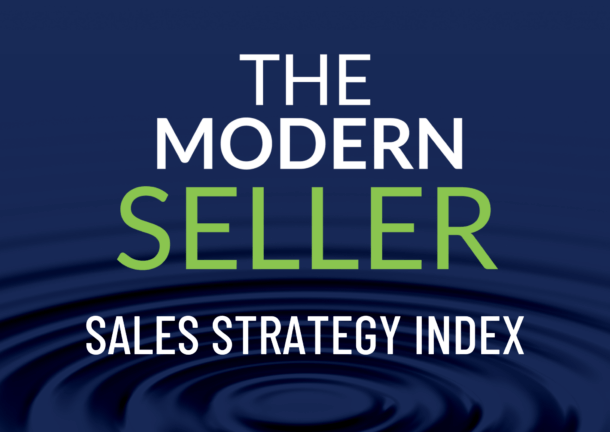Are you focusing on referral strategies in your sales plan and sales training? According to Think Impact, 78% of B2B sales referrals lead to viable customer leads, and 65% result in new business opportunities. Learn how to nurture loyal clients, handle referral mishaps, and build a strong network ecosystem in this post.
********
When sales referrals go wrong
One of my best sources of new business is introductions to decision makers and influential people through my network. That same network is also the source of introductions for a service or product I might need. I’m not alone. According to a report by Think Impact, 78% of B2B sales referrals create viable customer leads for the business, and referrals end up creating 65% of new business opportunities.
This is why I teach my clients about nurturing loyal clients and creating a strong network ecosystem
But sometimes introductions don’t work out as planned.
This is one of the key pushback reasons I get from people who don’t want to ask for or make introductions. They fear that an outcome might make them look bad, so they don’t do it at all. It’s never a good strategy to avoid being a connector, because the rewards most definitely outweigh the risks.
The story I’m about to describe doesn’t happen often; but having a strategy in case it does will keep you confidently making and receiving those introductions and sales referrals.
This story starts with a request I made to someone I trust to help me find a specific service. That person didn’t have that expertise in house, and so I was introduced to another provider that this person trusted. I’d heard of the provider before, they’re a known entity in my area. With those two pieces of information (trusted introduction source and known entity), I was confident that this would be a good match for what I needed and moved forward.
In my case, the quality of the product didn’t meet expectations, given the glowing recommendation I’d been given. The result negatively impacted my client. They spent an inordinate amount of time fixing mistakes that should’ve never happened.
Does your sales training teach how to handle a sales referral introduction that goes awry?
There are a few lessons I took away from the experience to make sure it didn’t happen again — to repair the client experience and to keep the relationships positive. Here are some tips you can share with your sales team.
- Hear the client out in a non-defensive way. I received a very professional email from my client letting me know the quality of the work product (done in partnership with my referral) left them with a lot of cleanup work to do. Not all client feedback will be as professional as what I received, and it’s easy to go into defensive mode. Resist the temptation. Hear them out and let them know you’re going work with them to make it right.
- Provide professional feedback to the referring source and any others directly involved. There are a lot of relationships here, both within your network and your client. Find a way to provide constructive input to those involved. If needed, they will hopefully step up to help you find a way to make it right. If they don’t, then that’s another data point for you going forward.
- Stay focused on solving the issue and find a workable solution. Offer to brainstorm with the client and others as appropriate to find a workable solution. Or offer up several ideas and ask them if any of those ideas will alleviate the problem.
- Document the lessons learned and what can be done. My client and I have a go-forward plan for the next time this service is needed, including what we will do both before and during the project to head off future issues. The lessons-learned exercise also applied to future referrals. My plan going forward is to get at least one other referral and do additional vetting prior to engaging a service provider.
- Evaluate the overall impact on the client relationship. In my case, this was a long-standing relationship with a lot of goodwill and social capital. That can mean a lot when one situation goes wrong. But if it keeps happening or this is a new relationship, you may have some longer-term repair work to do. Ask the client to give you an open assessment of the situation and how well it was repaired. The previous point on documenting and communicating lessons and go-forward plans should help repair and keep the relationship.
- Keep moving forward. Don’t dwell on it and don’t burn bridges. It’s easy to keep reliving the issue. If it’s truly resolved and plans are in place to prevent future issues, don’t keep revisiting it with either your team or the client. It’s important for your mindset (and the client’s) not to dwell. If it does come up on their part, ask them if there’s any part of the go-forward plan they’d like to revisit so they have a strong comfort level going forward. In the same spirit, don’t burn bridges with the referral and do everything you can to keep the relationship professional.
In sales, as in life, sometimes things won’t go according to our best plans. Much of what I shared stems from the mindset of keeping the client front and center, listening with the intent to solve (instead of to defend), and keeping relationships solid. Doing those things within your sales strategy and sales activities and you’ll come out ahead.
Learn How to Create Your Own Network Ecosystem & Build Sales Referrals
Don’t let your competition get an advantage. We can help. If you want to know how to improve your sales referrals and grow your pipeline, let’s talk about sales training. Contact me to schedule time for a discovery conversation.
Frequently Asked Questions
Referrals are crucial in sales because they create viable customer leads and significantly contribute to new business opportunities. According to Think Impact, 78% of B2B sales referrals generate viable leads, and 65% of new business comes from referrals.
Many people avoid making referrals due to the fear of potential negative outcomes. However, the rewards far outweigh the risks. By focusing on building strong relationships and being a reliable connector, you can confidently ask for and make referrals.
If a referral doesn't work out as planned, it's important to handle the situation professionally: Hear the client out non-defensively. Provide constructive feedback to those involved. Focus on solving the issue and finding a workable solution. Document lessons learned and create a go-forward plan.
To ensure quality, always vet the service providers you're referring or being referred to. Get multiple referrals and do additional research before engaging with a service provider. Establish clear expectations and maintain open communication throughout the process.



 Our Strategic Selling signature sales training program is now available online. This online sales learning program is ideal for professional services and B2B sales. Get started with 2 free lessons.
Our Strategic Selling signature sales training program is now available online. This online sales learning program is ideal for professional services and B2B sales. Get started with 2 free lessons.